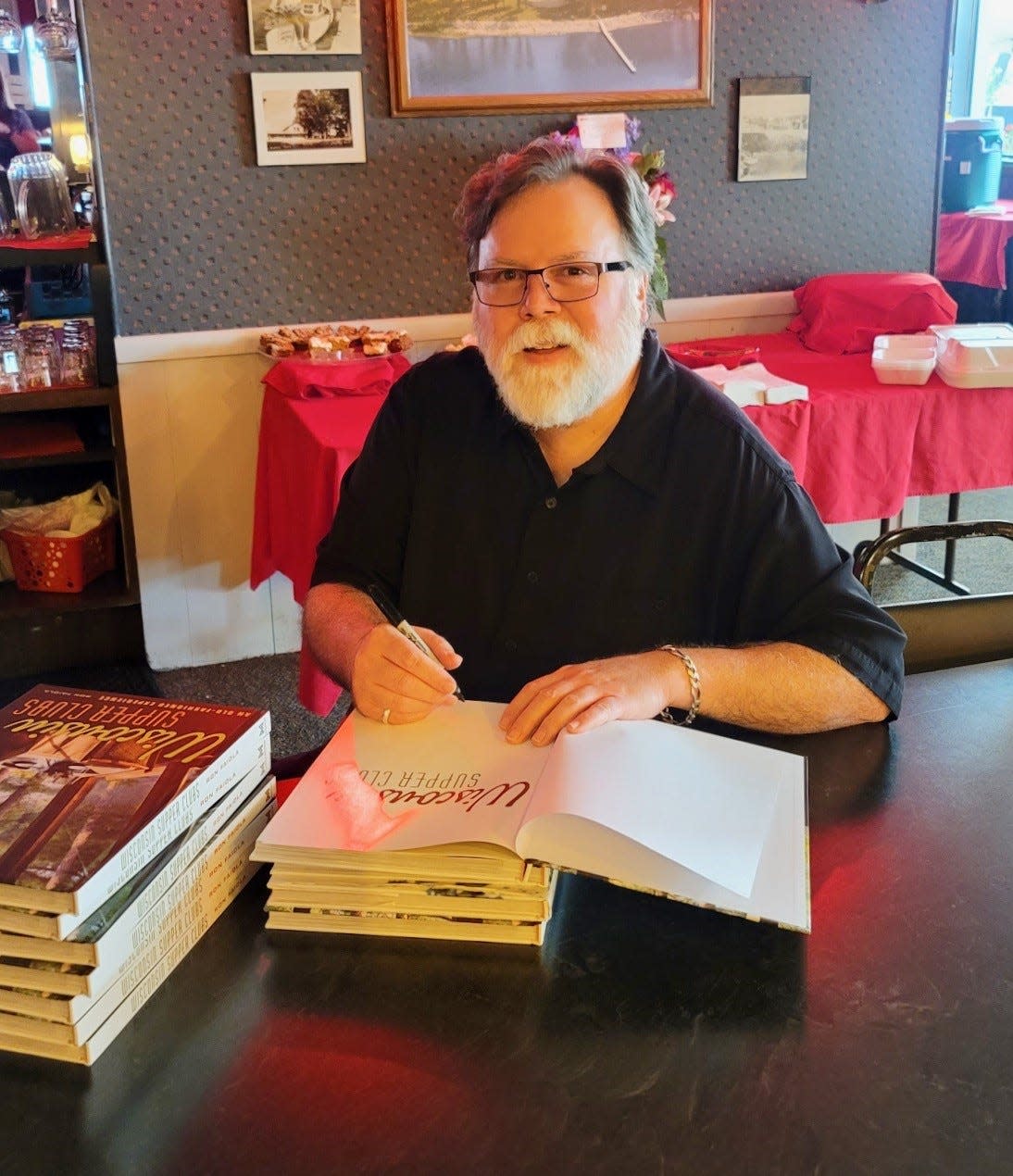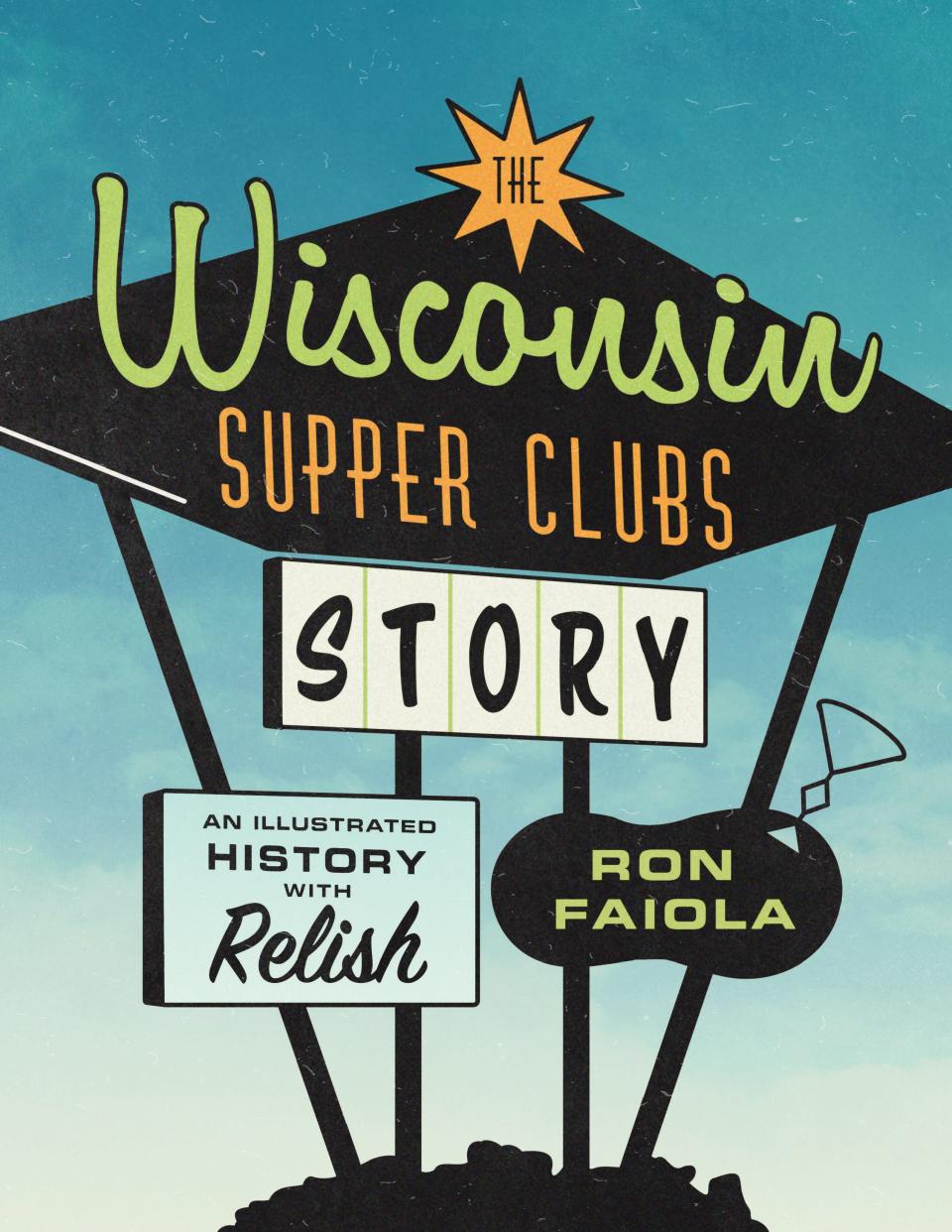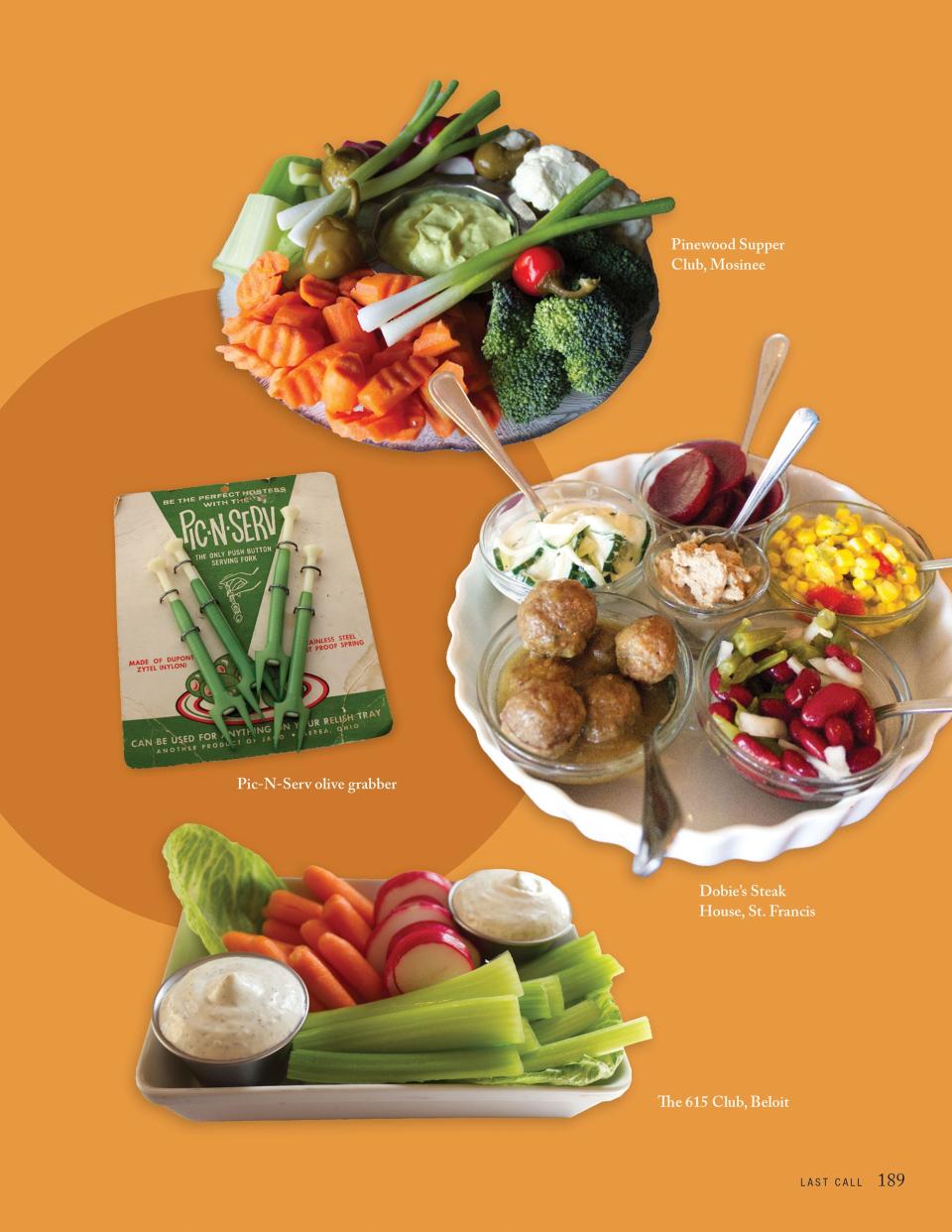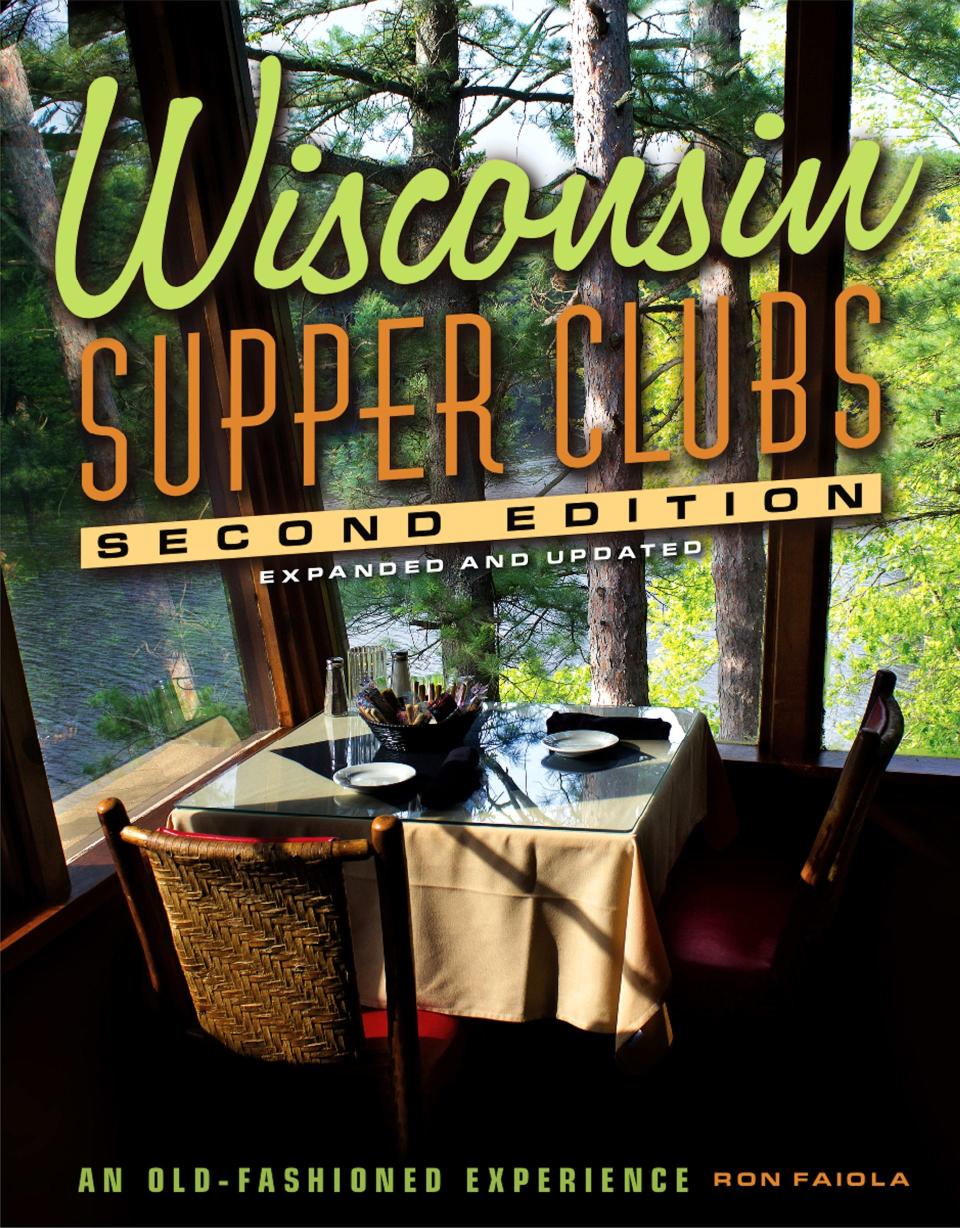What makes a Wisconsin supper club a Wisconsin supper club?

Before you go, you can put on the ritz — or a sweater and nice jeans. No one will bat an eye.
When you step inside, you'll be met with the familiarity and warmness of an up-north cabin, a glimmer of an old Hollywood film — and possibly a mounted deer head or two?
Yup, you're at a Wisconsin supper club.
Often, the evening starts with an old fashioned and ends with a grasshopper.
In between? The Wisconsin delicacy that is the Friday fish fry or another form of seafood. Possibly prime rib or pasta. Broasted chicken or a steak.
You might run into an old buddy or neighbor. You might meet someone who feels like an old buddy or neighbor by evening's end.
Supper clubs are a lot of things. But also, a lot of things they are not.
And there are more than 250 of 'em across the state. That's according to a list compiled by supper club expert Ron Faiola.
Faiola has written four books on the topic — one of which was released in November — and also made a documentary about them.
As part of our What the Wisconsin? series — where reporters take on questions about our state, our communities and the people in them — we talked to Faiola and consulted his books about the history of supper clubs, including how they came about, what makes them what they are and how they've changed over the years.
Plus, we've included a preview of his new book, "Wisconsin Supper Clubs: An Old-Fashioned Experience, Second Edition."
What makes a supper club, well, a supper club?
"While there has never been an exact consensus of what makes a supper club a supper club, there has always been one common element: people sharing a late meal with others," Faiola wrote in his third book, "The Wisconsin Supper Clubs Story: An Illustrated History, With Relish."
Faiola described Wisconsin supper clubs to the Journal Sentinel as "community gathering places." He said these are a few of their pillars:
The food is from-scratch American cuisine, including steaks, seafood, fish fry and broasted chicken. And, the entree usually includes a potato and salad.
They're usually operated by families, who often live on the premises.
They might have unusual hours of operation, such as being open four nights a week. And if the owner goes hunting or on vacation, the establishment typically just closes for the duration.
Some remain cash-only. An ATM may be located on site.
At some, patrons place their order at the bar.
Many have one — or all — of what Faiola calls "the holy Trinity" of supper club decor: twinkly lights, dark wood paneling and taxidermy.
While supper clubs share commonalities, they also have their own distinct personalities and ways of doing things that owners have cultivated over the years.
How did supper clubs start — and become popular in Wisconsin?
It's a tale as old as time — or at least many decades.
Legend has it that the first supper club in the U.S. was opened by a Milwaukee native in Beverly Hills, California, in the 1920s.
"On the Wisconsin Historical Society’s website, one can read that the first American supper club was established in the 1920s in Beverly Hills, California, by a Milwaukee native named Lawrence Frank. The article was referenced by a food blogger, repeated on Wikipedia, and therefore became 'fact,' like so many contemporary legends. Anyone who knows much about supper clubs will wonder how a gentleman from Milwaukee ended up opening a supper club in Beverly Hills," Faiola wrote in "The Wisconsin Supper Clubs Story."
Just because that account has been taken as gospel doesn't mean that it is.
Frank was from Milwaukee, yes. But the establishment he opened with folks in the 1920s? Not a supper club.
It was a diner called Montgomery's Country Inn, which they would later change to Scottish-themed Tam O'Shanter, according to Faiola's third book.
In the 1930s, Frank and his business partner opened Lawry's The Prime Rib, a fine dining restaurant in Beverly Hills. But still, not a supper club.
Supper clubs originated in London in the 1880s, Faiola told the Journal Sentinel. They were created to give members of the theater community a place to go after the theater closed for the night.
They were popular for being open all night and for serving up booze, food, entertainment and dancing, Faiola said. While the establishments were members-only, joining was easy and fees were minimal.
Faiola considers The Supper Club in NYC, which opened in 1895, to be the first in America. Like the London supper clubs, members and their guests would "eat, drink, sing, and dance into the wee hours of the morning," Faiola writes in his third book.
It wasn't until Prohibition that supper clubs "really took off," Faiola said.
During that era, Wisconsin dancehalls and roadhouses — often located on the edge of town — were places to dance, drink, hang out ... and sometimes partake in questionable activities, especially in remote areas, according to Faiola.
Post-Prohibition, many of these establishments transitioned into supper clubs.
Supper clubs hit their heyday in the 1950s and 1960s. Back then, they were essentially "adult playgrounds," he said, with plenty of food and the ability to stay open late.
Newspapers, radio and film all did their part to popularize supper clubs in their earlier decades in the U.S., Faiola said in a previous Journal Sentinel story. Watch films from Hollywood's Golden Age and you'll see scenes set in supper clubs. One sidebar in Faiola's third book recounts the movies in which relish trays were part of the scenery.

What were some of Wisconsin's first supper clubs?
Faiola considers these four Wisconsin supper clubs among the earliest:
Ray Radigan's in Kenosha (1933 to 2015)
The Turk's Inn in Hayward (1934 to 2013)
The Beverly Supper Club in Oshkosh (1934 to 1935)
Riviera Supper Club in Green Bay (1935 to 1966)
"There were places that were kind of considered supper clubs that were open around the same time or maybe earlier," Faiola said. "It's hard to really pinpoint the very first one. It wasn't like they were keeping track of that."
Relish trays were a supper club staple, but are now harder to find
First, what is a relish tray? Something to nibble on while deciding what to order. They often include pickled veggies, such as gherkins and olives; fresh veggies, including celery and radishes; and other offerings like nuts and cottage cheese.
While some supper clubs' relish trays have been "elevated to superstar status," Faiola said, they're harder to come by than they used to be. Relish trays began disappearing from supper clubs in the mid-2000s. And they're not always free.
"The whole reason why the supper clubs were getting rid of relish trays or not offering them anymore was people were wasting the food. They weren't eating what was there," Faiola told the Journal Sentinel. "So, they were throwing away a lot of vegetables, and you can't reuse that once it comes back from the table."
In some cases, relish trays have been replaced with salads or salad bars.
Whether an establishment offers a relish tray has no bearing on its status as a supper club, according to Faiola.
"Fans of supper clubs say, 'Oh, it's not a supper club unless they have a relish tray,'" he said. "But that's pretty ridiculous. You can still be a supper club without it."
What else has changed at supper clubs over the years?
Entertainment used to be a main draw: "It was a destination for the night," Faiola said. "You'd stay there for hours. People don't stay quite as long because there's no longer the entertainment that there used to be."
Milwaukee supper clubs in their midcentury heyday drew premium acts — and paid top dollar — for entertainers, according to a previous Journal Sentinel story. At the original Holiday House at Clybourn and Van Buren, the acts included Tony Bennett, Hildegarde, Phyllis Diller, Dean Martin and Gene Krupa, per Faiola's third book.
Some clubs continue to offer live music, but on a much more low-key scale and often on select nights.
Supper clubs close earlier than they used to: "Back in the early days, the whole point of the supper club was being open late," Faiola said. "While they wouldn't stay open all night like they did in London, they would close at bar time."
Often, the establishments now close at 9 p.m. with the fryers being shut off a little earlier, according to Faiola.
"People are eating early and going home early," he said.
Many supper clubs have trimmed their menus: Post-pandemic, Faiola has noticed that quite a few supper clubs have trimmed their menus. The reasons have included supply chain issues, staffing shortages and higher costs for food, such as crab legs.
Offering fewer options means less food wasted, he said.
"You buy what you're selling the most, and you concentrate on the food you do best," Faiola said.
As a result, some supper clubs have opted to print daily paper menus so changes can be made more easily.
"They have the usual steaks and fish fry and so on," Faiola said. "But they can't always get everything. Or they're just going to feature what they can get."

Diners' attire has become more casual: "I don't know where that came from of people not dressing up anymore," Faiola told the Journal Sentinel. "And when I say dressing up, I don't mean like suit and tie. But just a collared shirt and nice pants."
Some supper clubs have established dress codes, he said.
For supper club newbies, Faiola suggests going with a business casual look, such as a collared shirt or blouse with a pair of nice jeans or khakis, or a dress.
What made supper clubs last in Wisconsin?
In smaller Wisconsin communities, supper clubs were the "community gathering place," Faiola said. That's where locals would just go, especially if the club's owners grew up in the area. That was especially true before the prominence of chain restaurants.
Wisconsin's reputation as a recreational destination went "hand-in-hand" with the remote locations of supper clubs, Faiola explained.
"The people that would come here either as tourists or buying cabins up north or so on, they just kept the supper clubs in business," he said. "While the rest of the United States, things changed and the supper clubs faded away, Wisconsin held on to their supper clubs."
If you visit another state, will their supper clubs be the same?
"There's a difference between a Wisconsin supper club and places that call themselves supper clubs around the U.S.," Faiola said.
They could be "all sorts of things," he said, even pop-up dinner events.
Ron Faiola has a new book: 'Wisconsin Supper Clubs: An Old-Fashioned Experience, Second Edition'

For the 10th anniversary of Faiola's first supper clubs book, he's releasing an updated and expanded version.
For "Wisconsin Supper Clubs: An Old-Fashioned Experience, Second Edition," Faiola revisited 24 of the dozens of establishments that starred in the original. That includes Diamond Jim's in Hales Corners, the Hobnob in Racine and Ishnala Supper Club in Lake Delton, which is featured on the cover.
Faiola also updated the rest of the clubs' profiles from the first book, which included writing obituaries for 11 that are no longer around.
The new book highlights 15 additional supper clubs that are "hidden gems and worthy destinations," Faiola said, including Majerle's Black River Grill in Sheboygan, The Hilltop in Cross Plains and The Steakout in Greendale.
Faiola said he also incorporated a visit to Beloit's Broaster Company since many establishments use its broaster machines to make the supper club staple that is broasted chicken.
And just in time for the holiday season, the book also has a "celebrate the holidays at a supper club" part, featuring photos at Duck Inn Supper Club in Delavan. The pictures remind Faiola of "old fashioned" holiday imagery he saw in books as a kid.
How Ron Faiola researched his new 'Wisconsin Supper Clubs' book
After conducting research and deciding which supper clubs to go to for the new book, Faiola created an itinerary. From June through October 2022, he was on the road for two or three weeks at a time.
During a supper club visit, Faiola would interview the owner(s) and staff; take photos with his professional cameras of the food, the place and the people; and try a bit of the food. He then retreated to where he was staying to type up his notes from the visit and go through his photos.
The following day, he traveled to the next supper club on his list to do it all over again.
"Some people, you know, they'll say: 'Oh, you have such a great job. You get to hang out at all these supper clubs,'" Faiola said. "Well, it is great and I do enjoy it. But, it's not like I'm sitting at the bar, laughing it up and ordering a bunch of food and hanging out. It was a lot of work."
In October 2022, Faiola compiled all of the writing. The book is organized into five regions of the state: southeast, southwest, northwest, northcentral and northeast. He then went through the rewriting and editing processes.
"Wisconsin Supper Clubs: An Old-Fashioned Experience, Second Edition," published by Agate, was released Nov. 21. It costs $38.
"To hold it in my hand and page through it really makes me feel great," Faiola said. "After all that work, you're like, 'There it is!'"
Events for the new book, where to purchase it
On Nov. 25, Faiola will be doing a meet-and-greet/book signing at the Hobnob, 277 Sheridan Road, Racine, from 5 to 7 p.m. The event is free to attend, with copies of the book available for purchase.
On Nov. 30, Faiola will be doing a talk and book signing at Milwaukee's Boswell Book Company, 2559 N. Downer Ave., at 6:30 p.m.
The talk portion — which Faiola expects to be 25 minutes — will include a brief history of supper clubs, how Faiola got his start, and photos from his travels across the state for the new book.
While the event is free, those who wish to attend are to register here: eventbrite.com/e/ron-faiola-author-of-wisconsin-supper-clubs-2nd-edition-a-boswell-event-tickets-688024829787.
"Wisconsin Supper Clubs: An Old-Fashioned Experience, Second Edition," published by Agate, was released Nov. 21 and costs $38. It is available at local bookstores and gift shops, Milwaukee-area Sendik's locations, Barnes & Noble, Amazon and other retailers.
For more information on Faiola and his works, visit wisconsinsupperclubs.com.
What's What the Wisconsin?
Is there something about Milwaukee or Wisconsin that's been puzzling you? We've got experts who know how to find answers to even the smallest (and sometimes the most interesting) questions. When we can, we'll answer with stories. Submit your question at bit.ly/whatthewisconsin.
This article originally appeared on Milwaukee Journal Sentinel: Wisconsin supper clubs: What are they and why have they lasted?

